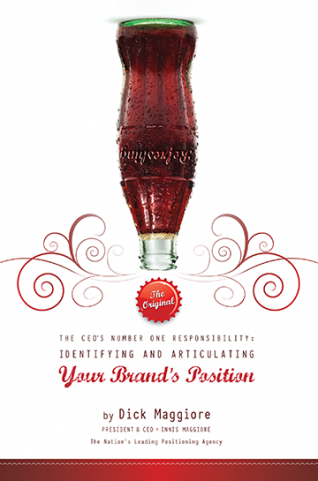In a recent planning session for our 50th anniversary events, I was surprised to learn that our senior project manager had specified a Stanley mug for our kickoff celebration swag bag. I’m a Yeti fan, so this choice raised my curiosity. I might have even expected Hydro Flask. But Stanley? Then about a week later, a friend of mine from our local regional chamber sent me a LinkedIn article about the evolution of Stanley and its recent product successes. Finally, an associate texted me a photo of her 11-year-old daughter all excited about the latest Stanley tumbler she purchased from Target. My curiosity piqued; I had to investigate. What turned up was a great perspective and why one of the Cs in our 4C positioning filter – context – is such a vital element in adopting your market positioning.
The short conclusion: Stanley is a success story. For comparison, I’m choosing Kodak as our not-so-successful story. These examples provide us the right way and the wrong way to respond to market forces. They are gentle reminders that market positioning and the context filter must be considered by the C-suite, marketers, and product developers.
Let’s start with the success story.
Stanley’s Market Positioning Context
Stanley, for those who may not know, invented the steel vacuum-sealed bottle in 1913. Their website describes their bottles as, “an essential part of workdays, road trips, and outdoor adventures.” The primary target for over 100 years was men who had rugged careers or lifestyles.
What changed and how did forces impact their market positioning? It’s hard to credit Stanley for the move. It’s more about crediting the company for its response to a completely random circumstance. Our response to the situation is more important than whether we created the force, or not.
In November of 2017, the founders of an online shopping blog called “The Buy Guide” featured the Stanley Quencher. “Of all the insulated cups ... this is the one. Just trust,” their blog post stated. And so, followers started to purchase the Quenchers. Unaware of this post and its resulting sales, Stanley made no moves to shift marketing focus to the product even as recently as 2019.
When The Buy Guide founders contacted Stanley to let them know of their followers’ interest, Stanley told the women to just place a wholesale order, which had a minimum quantity of 10,000. The three founding women took the risk and in four days (plus one hour), sold all 10,000 tumblers.
Around the same time, Stanley had a leadership change who saw the potential of the Quencher and the entire hydration category. Stanley officially partnered with the influencers and sales took off.
Therein is the tale of both the randomness and the response. Stanley’s leadership realized it would never grow beyond its existing size if it kept the same position as the vacuum-sealed bottle for outdoorsy and rugged working men. The company was flexible enough to shift its market position without sacrificing its reputation as the best-built tumblers on the market or losing its existing customer base.
The adoption of Stanley tumblers – specifically the Quenchers – by women of all ages, catapulted sales from $73 million in 2019 to what is anticipated will be $750 million to end 2023.
Context – the filter for remaining relevant based on market forces – required a change in position. Stanley is our success story.
To learn more on what not to do, let’s shift our topic to the dark side of adapting to market forces.
Kodak’s Market Positioning Context
We’ve written about what happened to Kodak and all the gory detail – the article is worth the read still 12 years after the company's bankruptcy. But a brief reminder is in order to help draw the comparison between how two legacy corporations responded to evolving market forces and won and lost the market positioning battle.
In a Forbe’s article written on the day Kodak declared bankruptcy in 2012, they quoted Steve Sasson, the Kodak engineer who invented the first digital camera in 1975: “…management’s reaction [to the digital camera] was, ‘that’s cute—but don’t tell anyone about it.’” So the first misstep was rejecting the idea outright. Major blunder #1. Leaders should always look at disruption, especially attacking their own products and services. Why? Because leaders innovate. Even if the idea doesn’t develop (“film” pun intended), investigating the idea is better than dismissing it outright. And remember, ideas can come from anyone, not just product developers.
The article goes on to detail that in 1981, there was a study conducted indicating a 10-year projection for digital adoption. While history shows us this research was fairly accurate, Kodak’s response to this disruption made it appear they didn’t agree with the research, or that they didn’t believe in the market potential. Major blunder #2. Kodak bought and sold companies that had nothing to do with film or the photography industry at all. They spent their “extra cash” playing around the fringes instead of investing in its core competency. The shift from film to a broader photography category should have been easy. Look at Crest moving from just toothpaste to the broader category of oral health and hygiene. It’s possible. And advisable.
Finally, Kodak’s leadership didn’t make the market positioning moves that are necessary to introduce a new product. Like Toyota did with Lexus, or Honda did with the Acura, a new company and brand name would have likely been the best road to success. Kodak named its new division Kodak Digital Science. But Kodak was the essence of that brand name. And Kodak’s position was film. It had the brand nirvana of owning the category! But film is not a digital medium. A new brand name would have been the best market positioning move. Major blunder #3, and perhaps the final nail in the coffin.
The Takeaway
It’s quite common that companies respond incorrectly to trends and market forces, even ones they can’t anticipate. When wrong moves happen repeatedly like with Kodak, then there is probably corporate stubbornness in play. It’s not likely that it was solely a lack of understanding on how to properly position a brand in the market and respond to market forces and competitive moves. But that was certainly a part of the equation. Stanley responded well to forces it didn’t foresee, and opportunities it didn’t plan. And it loosened the reins on its own perception of its brand identity. Check out this video for the whole success story or for even more detail, this article.
The question to ask yourself is, “How does the latest market force, competitive move, or the way we do business impact my products and services, and what will I do about it?” Also, perhaps a better question, “How do I disrupt my own products and services?” If your C-suite, product developers, and your marketing team are not regularly tackling these questions, you might find yourself on the wrong side of history. If you need an outside voice to help you evaluate your market positioning, contact Innis Maggiore. Daily, we see industry and market forces in play and help clients respond accordingly.



